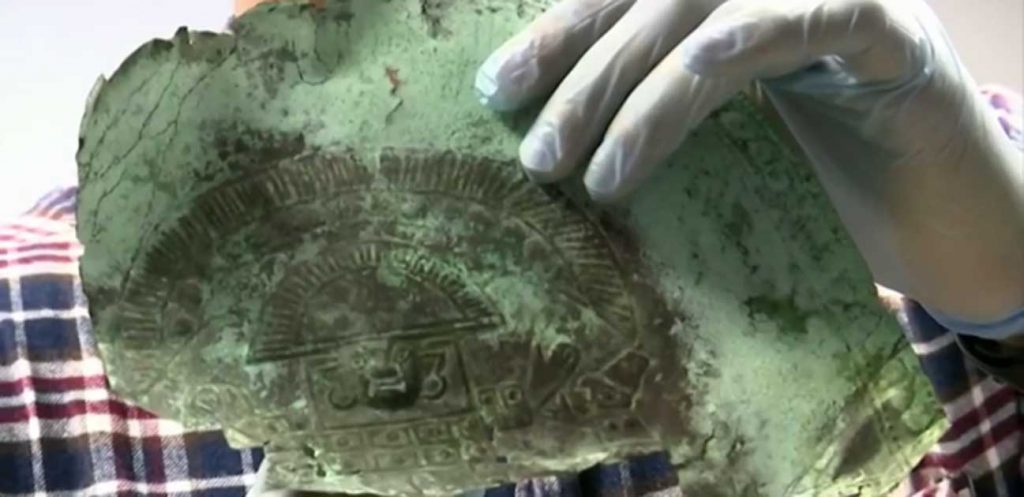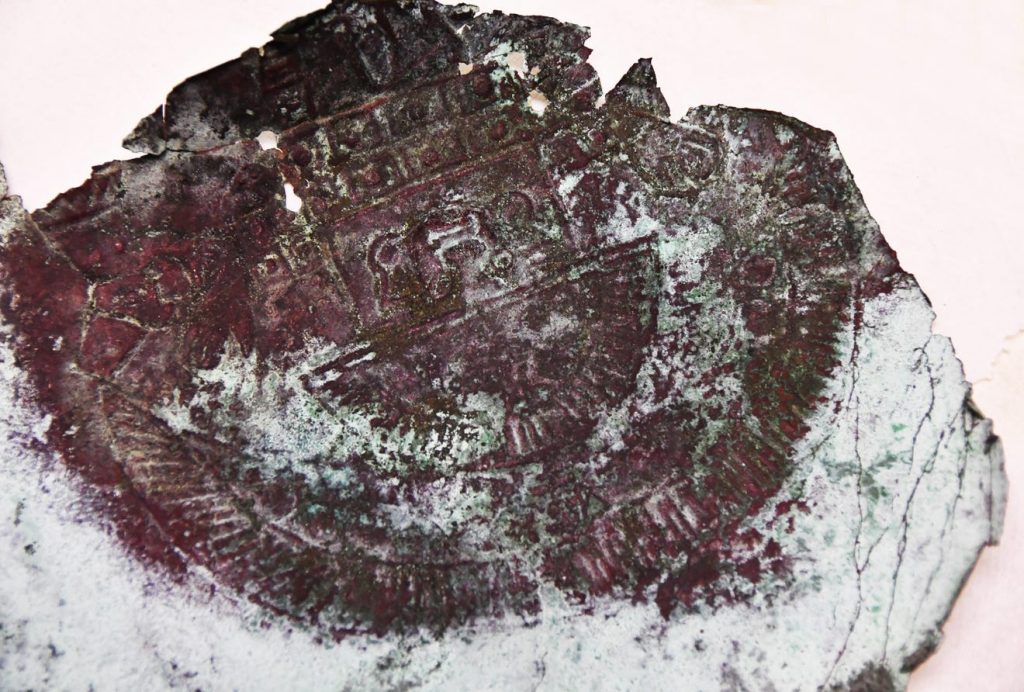Ancient Inca Artifact Discovered in Florida Points to a $4 billion Sunken Treasure Hoard

Ancient Inca Artifact Discovered in Florida Points to a $4 billion Sunken Treasure Hoard
An undersea treasure hunter has found a possible ancient Peruvian artefact near Melbourne Beach which could be carried by the doomed Spanish Plate Fleet in 1715.
Mike Torres, chief technology officer of Seafarer Exploration said–“I thought it was scrap. I thought it was a NASA scrap, honestly. I thought it was a piece of an aircraft,” He found the item Jan. 14 in the pre-dawn darkness.

The circular copper relic has a bird-like image measuring about 10 inches across bordered by intricate patterns. John de Bry, director of the Melbourne Beach Center for Historical Archeology, said that the item was once plated with gold.
De Bry has studied the 1715 Plate Fleet — which takes its name from “plata,” the Spanish word for silver — since the late 1960s. Eleven of the 12 ships in the fleet were lost in a hurricane of the coast of East Central Florida.
After examining the object Thursday at his home office, de Bry suspects it is the top portion of a headdress from a burial site dating to the Moche civilization, which flourished in Peru from about 100 to 700 A.D. — centuries before the Inca Empire.
“The close proximity of a 1715 shipwreck — especially one that might be the Concepción from Tierra Firme, South America — seems to explain the presence of this particular artifact,” de Bry said, peering through a magnifying glass at the metal artwork.
The object has not yet been verified as authentic.
Seafarer Exploration is a Tampa-based company that explores, documents and recovers historic shipwrecks. Since 2014, the Florida Bureau of Archaeological Research has permitted the firm to search for artifacts in the Melbourne Beach area.

In 2004, divers discovered an iron cannon that may have belonged to the fleet off the Melbourne Beach shoreline. Subsequent expeditions yielded silver platters, a flintlock pistol, ship timbers and other artifacts.
Torres called the Jan. 14 find the most significant in his company’s history.
He declined to divulge details about the shipwreck location. He also said he has no plans to sell the object and declined to speculate on its value: “How would you price that? I don’t know.”
Seafarer Exploration has contacted archaeologists with Columbia University, Harvard University and Tulane University. Torres said spectrometer measurements show the metal artifact is 90 percent copper and 7 percent iridium, with trace amounts of gold and silver.
Torres — a former adjunct professor of aerospace engineering at MIT — said he employed satellite imagery and new software that he developed to pinpoint Concepción’s twin debris trails. Each debris trail stretches about 1.5 miles. He said he discovered the mystery object during his software’s first field test.
The 1715 Spanish Plate Fleet carrying gold and silver met disaster when a fierce July hurricane struck Florida’s East Coast. After assembling in Havana, Cuba, 11 of the fleet’s 12 vessels sank mostly along the coasts of Indian River, St. Lucie and Martin counties — and perhaps 1,000 sailors lost their lives. This region is now known as Florida’s Treasure Coast.

Seafarer Exploration’s primary boat is Iron Maiden, a 46-foot research vessel based at Port Canaveral. Seafarer Exploration staffs an office in Palm Bay, and the firm’s marine archaeologists are exploring a second historic shipwreck site off Juno Beach.
In August, a different salvage company, 1715 Fleet-Queens Jewels LLC, retrieved a 303-year-old cannon from the doomed fleet’s Sandy Point shipwreck, just north of Fort Pierce.
Seafarer Exploration is negotiating with the Florida Division of Historical Resources to recover an iron cannon from the Concepción permit zone for restoration and public display, Torres said.